If you’re traveling to Japan, trying out the local cuisine is a must-do activity, and kuzu mochi should be on your list. This traditional Japanese dessert is not only a delicious treat but also a cultural experience that will allow you to taste and appreciate the unique ingredients and flavors that Japan has to offer. From its soft, jelly-like texture to its subtle sweetness and nutty flavors, kuzu mochi is a dessert that will tantalize your taste buds and leave you wanting more. So don’t hesitate to try out this delightful treat during your next visit to Japan.
What is Kuzu mochi?
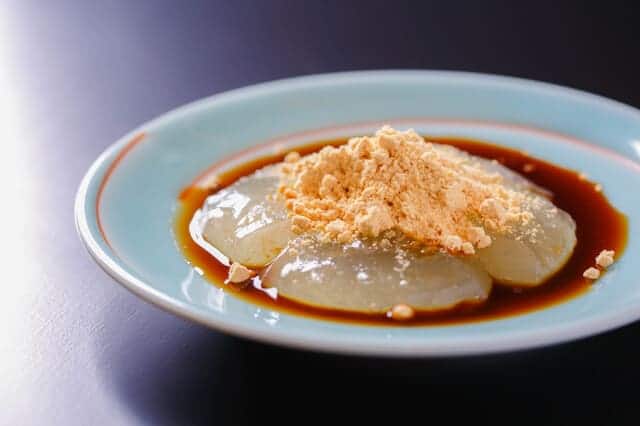
Kuzu mochi is a Japanese confectionery or wagashi made in Nara prefecture using kuzuko powder (Kudzu roots). Locals often served this with kinako, a sweet roasted soybean flour, or kuromitsu, a type of molasses. It is a popular treat during special occasions and festivals in Japan. What sets kuzu mochi apart is its use of kudzu starch instead of rice flour. This unique ingredient gives kuzumochi its signature jelly-like texture and translucent appearance. Kuzumochi is not the same all over Japan, and the ingredients and how to make it are different in Kanto and Kansai. The appearance and texture are also different because the ingredients and how to make them are different.
Kuzu mochi History
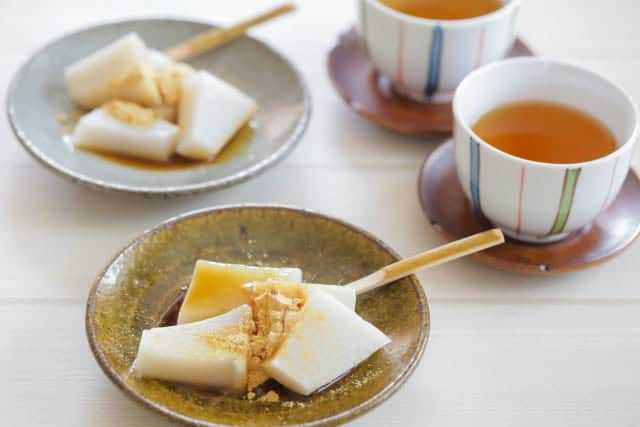
A translucent, chewy rice cake called “kuzumochi” is prepared with kudzu powder. A perennial leguminous plant known as kudzu used to make kudzu powder may be found all throughout Japan, from Kyushu in the south to Hokkaido in the north. According to history, the Kuzubito, mountain people who resided in the Yoshino area of Nara Prefecture and produced and marketed kudzu powder, gave the plant its name. In the middle of winter, using only subterranean water, the starch found in the root of the kudzu is continually refined to create “kuzuko,” a natural meal dried for two to three months. There are no additives in it.
In this manner, “Yoshino Honkuzu” refers to kudzu powder created entirely from kudzu starch. Also, the Yoshino-zarashi production method, a historic manufacturing technique that has persisted since the Edo era, refers to the manufacturing process of repeatedly being exposed to cold water throughout the hard winter. The cold weather and high-quality water in the Yoshino region of Nara Prefecture produce high-quality kudzu flour.
Kanto vs Kansai differences
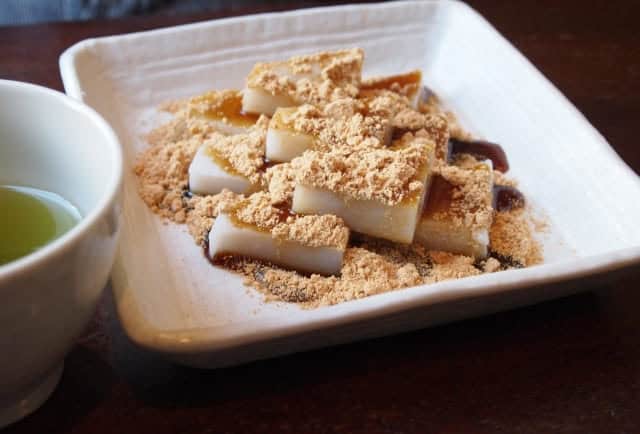
Kuzumochi from the Kanto region is made from fermented wheat flour. However, in Kansai, the raw material is refined starch (kudzu flour) taken from the root of a plant called kudzu. This difference in raw materials creates a difference in texture.
Mainly in the Kansai area, it refers to confectionery made by kneading kudzu powder and sugar while heating, pouring it into a mold, and hardening it or confectionery wrapped in bean paste like kudzu manju. It is popular as a summer sweet. It has a transparent and smooth appearance, and you can enjoy a chewy texture. However, kudzu powder is expensive, so starches such as potato and corn are sometimes used instead. First, heat the kudzu powder dissolved in water. When the stickiness comes out, knead it many times to finish it. By kneading it over and over again, it becomes a chewy texture.
In the Kanto region, kuzumochi sometimes refers to a milky white dough made by steaming fermented flour starch and cutting it into triangles, with a faintly sour taste. The raw material for this version of kuzumochi is fermented flour made from “ukiko,” a type of wheat flour from which locals remove gluten. They wash the fermented flour to remove any starch, odor, and acidity before being dissolved in hot water and placed into molds for steaming. This process results in a kuzumochi with a whitish appearance and springy texture, along with the unique sourness associated with fermented foods. Meanwhile, in other regions, kuzumochi is made using kudzu powder and has a jelly-like texture instead.
Health information about Kuzu mochi

Japanese sweets include fewer calories than Western sweets, mostly from rice flour, adzuki beans, and sugar, with nearly no fat. “Kuzumochi” solely uses sugar and arrowroot powder instead of fat. As black honey and soybean flour don’t contain lipids, they can be considered healthy snacks for people with diabetes or on a diet.
Kuzu mochi vs Warabi mochi
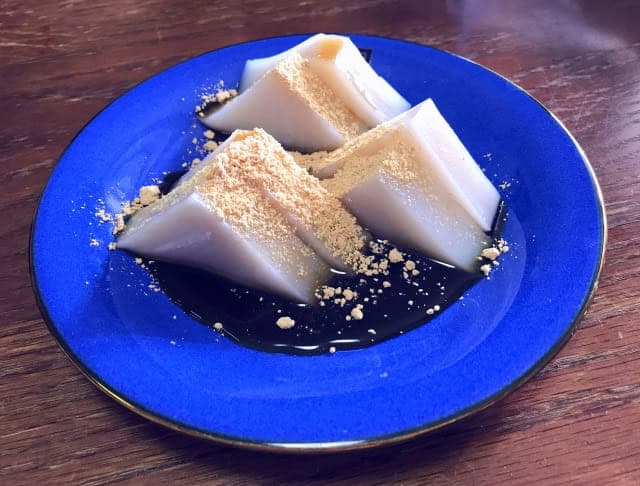
The Kanto region is famous for its crisp, popping, plump, and flavorful kuzumochi. Moreover, it has a unique lactic acid fermentation-derived acidity that is similar to yogurt. Kuzumochi from Kansai has a fresh, smooth texture. It’s soft and chewy and has a light texture. The more kudzu powder, the smoother and more comfortable. They are also from kuzu (or arrowroot) starch and water. On the other hand, warabi mochi is made from bracken (or fern) starch, water, and sugar. It has a softer and more delicate texture than kuzu mochi and often dusted with kinako or warabi powder. Warabi mochi exhibits a chewy and strong elasticity that characterizes it. Adding more warabi powder results in a smoother texture that dissolves pleasantly in your mouth, allowing you to savor its aftertaste.
Kuzu mochi FAQ
- How to eat Kuzu mochi?
-
Eat with your favorite soybean powder or brown sugar syrup. When the kuzumochi is chilled, its elasticity stands out, but if you eat the freshly made mochi in ice water so that the inside is still slightly warm, you can enjoy the chewy and fluffy texture.
- What is the texture and taste of kuzu mochi like?
-
Kuzu mochi has a unique texture that is soft, chewy, and slightly elastic, similar to a gelatinous jelly. The texture is quite different from other Japanese rice cakes, such as mochi, which is sticky and chewy. It also has a subtle sweet and nutty flavor, with a delicate aroma from the kudzu powder used in making it.
Kuzu mochi Recipe
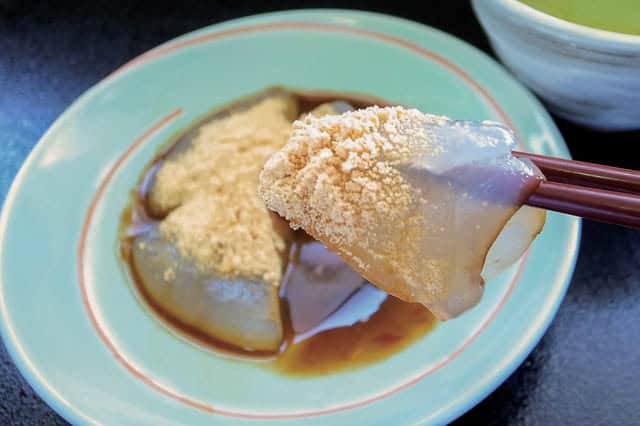
Kuzu mochi Ingredients
| Ingredients of Kuzu mochi for 4 persons | Measurement |
|---|---|
| Yoshino Honkudzu | 80g |
| Sugar | 28g |
| Water | 400g |
| Dark honey | 10g |
| Soybean flour | 20g |
How to make Kuzu mochi
Put Yoshino kudzu, sugar, and water in a pot, dissolve well, and heat over high heat.
Stir until the whole becomes transparent and put it in a smaller container.
Cool under running water and remove from the container. Then, arrange on a plate and sprinkle with soybean flour and brown sugar syrup to finish.
Where to buy Kuzu mochi?
Funabashiya (船橋屋 亀戸天神前本店)
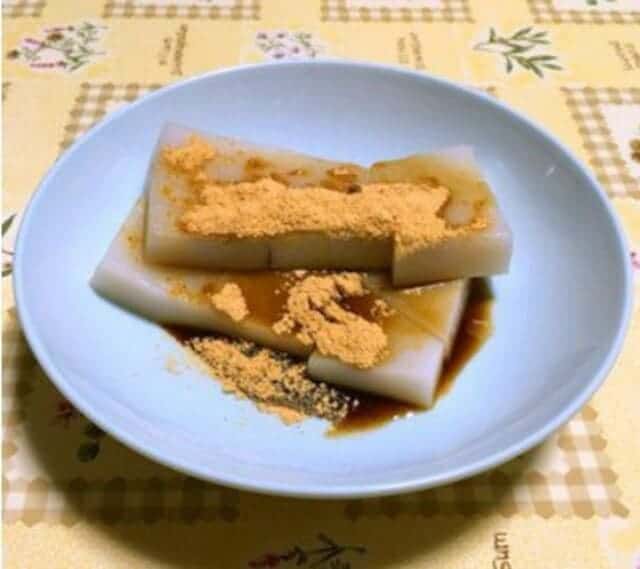
The birthplace of Kanto-style Kuzumochi is Funabashiya (船橋屋), an old-established confectionery shop founded in 1805 in Kameido, Tokyo. The resulting kuzumochi is served without any preservatives, which means you should enjoy it within 2 days. Locals considered this natural product a healthy food, which makes people love it even more.
Tengyokudo (天極堂)

Inoue Tengyokudo Co., Ltd. manufactures and sells confectionery and food ingredients such as “Yoshino Honkuzu” which has been making since its establishment in 1870. Various processed leaves such as persimmon, bamboo grass, oak, tsukune potato, frozen grated yam, and various vegetable pastes.
Asanoya Main Store (浅野屋本舗)
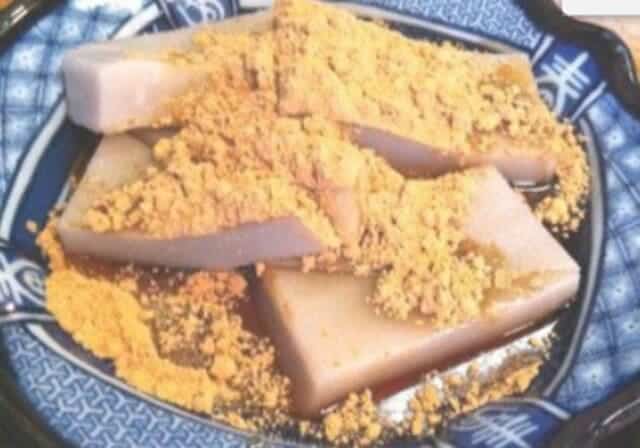
This shop serves plump kuzumochi which have soybean flour and black honey. And their rare Ogura bean paste is delicious with a modest sweetness. The chewy brown sugar syrup is not too sweet, and the kinako (roasted soybean flour) has a strong flavor.
Takeaway

In conclusion, anyone interested in Japanese food and culture must eat kuzumochi while visiting Japan. This delectable and interesting rice cake or wagashi stands out from other Japanese sweets because of its unique texture and flavor. In Japan, kuzumochi is commonly accessible at specialty stores, markets, and convenience stores, making it simple to taste wherever you are. On your next trip to Japan, make sure to look for this delectable dessert so you may experience the aromas and traditions of this unique Japanese treat.
You can check some Japanese dishes below that we know you would like to try too.
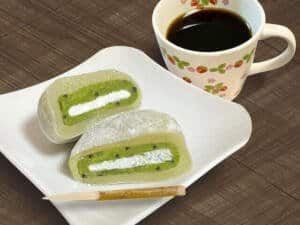
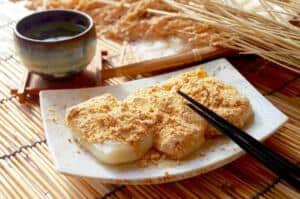
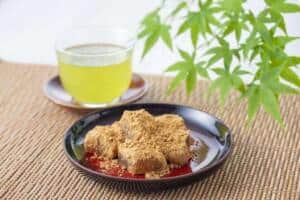

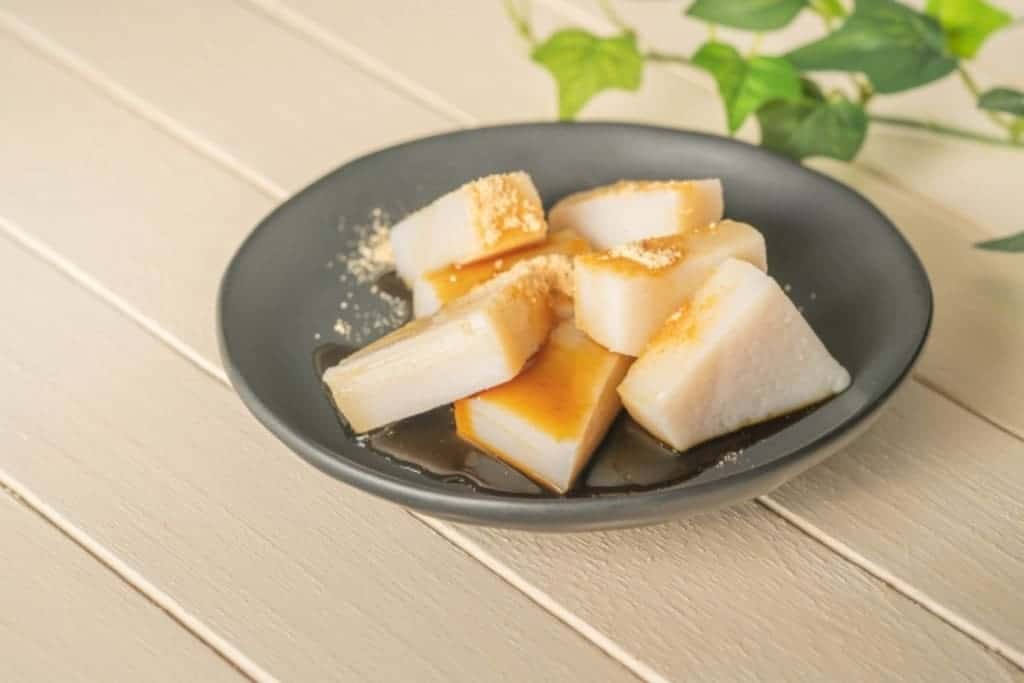
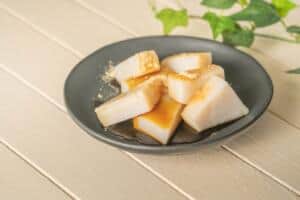
Comments